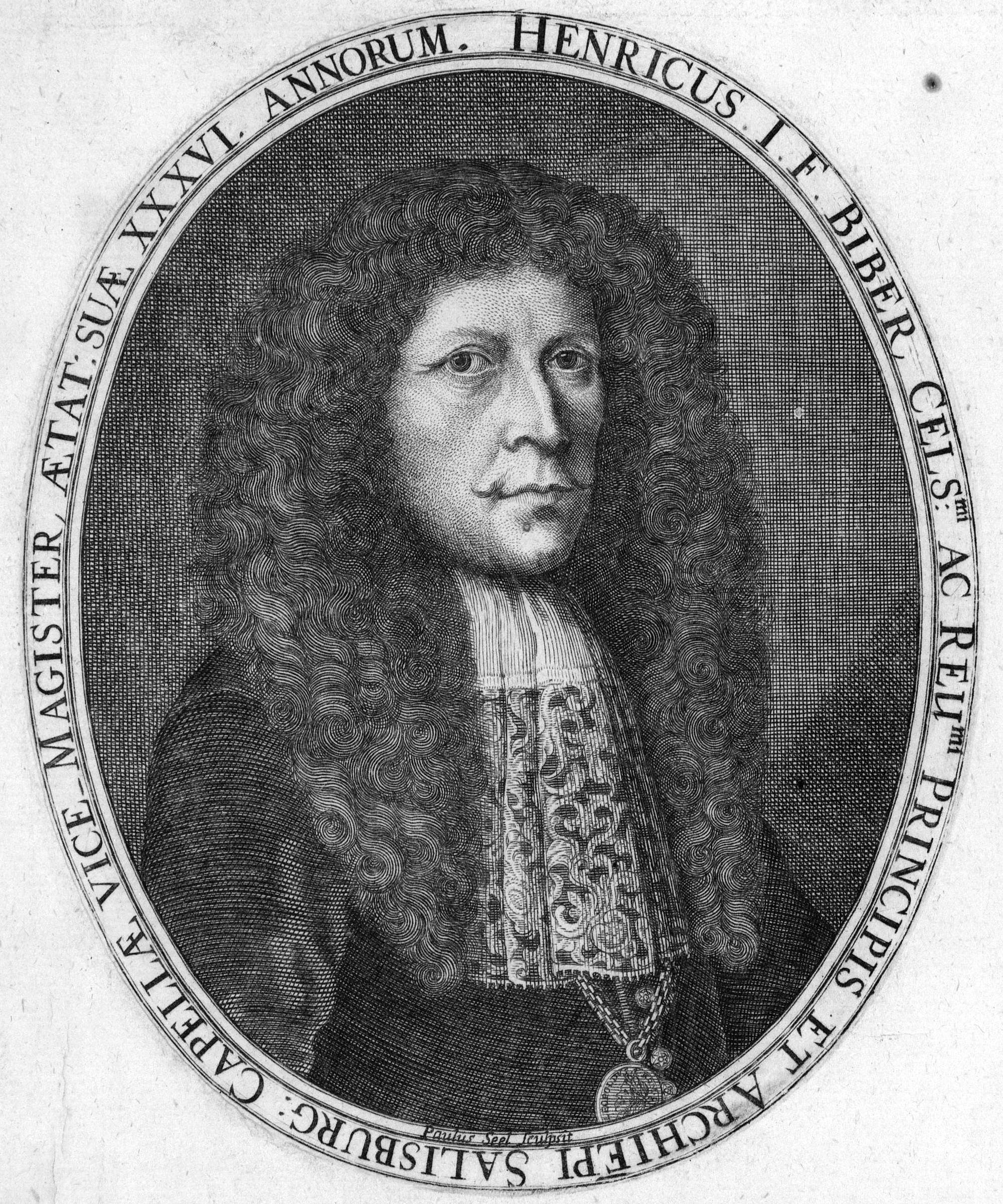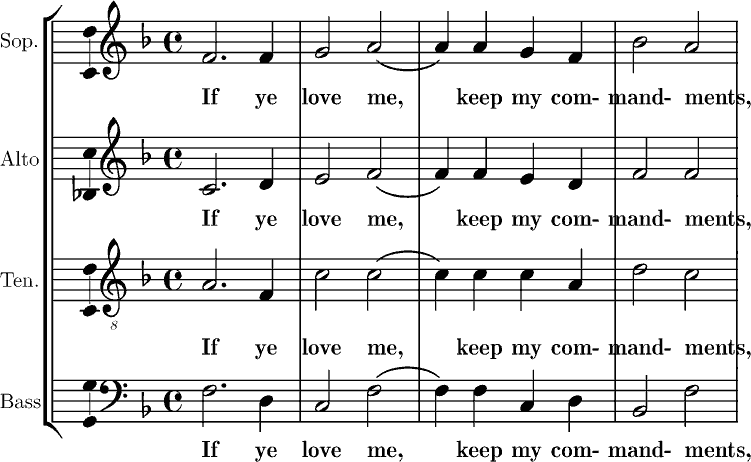|
Johann Erasmus Kindermann
Johann Erasmus Kindermann (29 March 1616 – 14 April 1655) was a German Baroque organist and composer. He was the most important composer of the Nuremberg school in the first half of the 17th century. Life Kindermann was born in Nuremberg and studied music from an early age; at 15 he already had a job performing at Sunday afternoon concerts at the Frauenkirche (he sang bass and played violin). His main teacher was Johann Staden. In 1634/35 the city officials granted Kindermann permission and money to travel to Italy to study new music. Nothing is known about his stay in Italy; he may have visited Venice like several other Nuremberg composers (Hans Leo Hassler, Johann Philipp Krieger). In January 1636 the city council ordered Kindermann back to take the position of second organist of the Frauenkirche. In 1640 he was employed as organist at Schwäbisch-Hall, but quit the same year to become organist of the Egidienkirche, the third most important position of its kind in Nurembe ... [...More Info...] [...Related Items...] OR: [Wikipedia] [Google] [Baidu] |
Basso Continuo
Basso continuo parts, almost universal in the Baroque era (1600–1750), provided the harmonic structure of the music by supplying a bassline and a chord progression. The phrase is often shortened to continuo, and the instrumentalists playing the continuo part are called the ''continuo group''. Forces The composition of the continuo group is often left to the discretion of the performers (or, for a large performance, the conductor), and practice varied enormously within the Baroque period. At least one instrument capable of playing chords must be included, such as a harpsichord, organ, lute, theorbo, guitar, regal, or harp. In addition, any number of instruments that play in the bass register may be included, such as cello, double bass, bass viol, or bassoon. In modern performances of chamber works, the most common combination is harpsichord and cello for instrumental works and secular vocal works, such as operas, and organ and cello for sacred music. A double bass may be ... [...More Info...] [...Related Items...] OR: [Wikipedia] [Google] [Baidu] |
Grove Dictionary Of Music And Musicians
''The New Grove Dictionary of Music and Musicians'' is an encyclopedic dictionary of music and musicians. Along with the German-language ''Die Musik in Geschichte und Gegenwart'', it is one of the largest reference works on the history and theory of music. Earlier editions were published under the titles ''A Dictionary of Music and Musicians'', and ''Grove's Dictionary of Music and Musicians''; the work has gone through several editions since the 19th century and is widely used. In recent years it has been made available as an electronic resource called ''Grove Music Online'', which is now an important part of ''Oxford Music Online''. ''A Dictionary of Music and Musicians'' ''A Dictionary of Music and Musicians'' was first published in London by Macmillan and Co. in four volumes (1879, 1880, 1883, 1889) edited by George Grove with an Appendix edited by J. A. Fuller Maitland in the fourth volume. An Index edited by Mrs. E. Wodehouse was issued as a separate volume in 1890. ... [...More Info...] [...Related Items...] OR: [Wikipedia] [Google] [Baidu] |
Heinrich Ignaz Franz Biber
Heinrich Ignaz Franz Biber ( bapt. 12 August 1644, Stráž pod Ralskem – 3 May 1704, Salzburg) was a Bohemian-Austrian composer and violinist. Biber worked in Graz and Kroměříž before he illegally left his employer, Prince-Bishop Karl Liechtenstein-Kastelkorn, and settled in Salzburg. He remained there for the rest of his life, publishing much of his music but apparently seldom, if ever, giving concert tours. Biber was among the major composers for the violin in the history of the instrument. His own technique allowed him to easily reach the 6th and 7th positions, employ multiple stops in intricate polyphonic passages, and explore the various possibilities of scordatura tuning.A Survey of the Unaccompanied Violin Repertoire, Centering on Work ... [...More Info...] [...Related Items...] OR: [Wikipedia] [Google] [Baidu] |
Scordatura
Scordatura (; literally, Italian for "discord", or "mistuning") is a tuning of a string instrument that is different from the normal, standard tuning. It typically attempts to allow special effects or unusual chords or timbre, or to make certain passages easier to play. It is common to notate the finger position as if played in regular tuning, while the actual pitch resulting is altered (scordatura notation). When all the strings are tuned by the same interval up or down, as in the case of the viola in Mozart's ''Sinfonia Concertante for Violin, Viola and Orchestra'', the part is transposed as a whole. Bowed string instruments The invention of scordatura tuning has been attributed to Thomas Baltzar, a prodigious German violinist and composer who is known to have used the technique in around the 1660s, at least a decade before Biber composed his ''Rosary Sonatas'' in which he employed the tuning technique. Of course, German violinist Hans Hake (1628 – after 1667) includes th ... [...More Info...] [...Related Items...] OR: [Wikipedia] [Google] [Baidu] |
Cantus Firmus
In music, a ''cantus firmus'' ("fixed melody") is a pre-existing melody forming the basis of a polyphonic composition. The plural of this Latin term is , although the corrupt form ''canti firmi'' (resulting from the grammatically incorrect treatment of ''cantus'' as a second- rather than a fourth-declension noun) can also be found. The Italian is often used instead: (and the plural in Italian is ). History The term first appears in theoretical writings early in the 13th century (e.g., Boncampagno da Signa, ''Rhetorica novissima'', 1235). The earliest polyphonic compositions almost always involved a cantus firmus, typically a Gregorian chant, although by convention the term is not applied to music written before the 14th century. The earliest surviving polyphonic compositions, in the '' Musica enchiriadis'' (around 900 AD), contain the chant in the top voice, and the newly composed part underneath; however, this usage changed around 1100, after which the cantus firmus typical ... [...More Info...] [...Related Items...] OR: [Wikipedia] [Google] [Baidu] |
Magnificat
The Magnificat (Latin for " y soulmagnifies he Lord) is a canticle, also known as the Song of Mary, the Canticle of Mary and, in the Byzantine tradition, the Ode of the Theotokos (). It is traditionally incorporated into the liturgical services of the Catholic Church, the Eastern Orthodox churches, and the Anglican Communion. Its name comes from the incipit of the Latin version of the text. The text of the canticle is taken from the Gospel of Luke () where it is spoken by Mary upon the occasion of her Visitation to her cousin Elizabeth. In the narrative, after Mary greets Elizabeth, who is pregnant with John the Baptist, the latter moves within Elizabeth's womb. Elizabeth praises Mary for her faith (using words partially reflected in the Hail Mary), and Mary responds with what is now known as the Magnificat. The Magnificat is one of the eight most ancient Christian hymns and perhaps the earliest Marian hymn. Within the whole of Christianity, the canticle is most frequentl ... [...More Info...] [...Related Items...] OR: [Wikipedia] [Google] [Baidu] |
Johann Sebastian Bach
Johann Sebastian Bach (28 July 1750) was a German composer and musician of the late Baroque period. He is known for his orchestral music such as the ''Brandenburg Concertos''; instrumental compositions such as the Cello Suites; keyboard works such as the '' Goldberg Variations'' and '' The Well-Tempered Clavier''; organ works such as the '' Schubler Chorales'' and the Toccata and Fugue in D minor; and vocal music such as the '' St Matthew Passion'' and the Mass in B minor. Since the 19th-century Bach revival he has been generally regarded as one of the greatest composers in the history of Western music. The Bach family already counted several composers when Johann Sebastian was born as the last child of a city musician in Eisenach. After being orphaned at the age of 10, he lived for five years with his eldest brother Johann Christoph, after which he continued his musical education in Lüneburg. From 1703 he was back in Thuringia, working as a musician for Prot ... [...More Info...] [...Related Items...] OR: [Wikipedia] [Google] [Baidu] |
Church Modes
A Gregorian mode (or church mode) is one of the eight systems of pitch organization used in Gregorian chant. History The name of Pope Gregory I was attached to the variety of chant that was to become the dominant variety in medieval western and central Europe (the diocese of Milan was the sole significant exception) by the Frankish cantors reworking Roman ecclesiastical song during the Carolingian period. The theoretical framework of modes arose later to describe the tonal structure of this chant repertory, and is not necessarily applicable to the other European chant dialects ( Old Roman, Mozarabic, Ambrosian, etc.). The repertory of Western plainchant acquired its basic forms between the sixth and early ninth centuries, but there are neither theoretical sources nor notated music from this period. By the late eighth century, a system of eight modal categories, for which there was no precedent in Ancient Greek theory, came to be associated with the repertory of Gregorian chant ... [...More Info...] [...Related Items...] OR: [Wikipedia] [Google] [Baidu] |
Counterpoint
In music, counterpoint is the relationship between two or more musical lines (or voices) which are harmonically interdependent yet independent in rhythm and melodic contour. It has been most commonly identified in the European classical tradition, strongly developing during the Renaissance and in much of the common practice period, especially in the Baroque period. The term originates from the Latin ''punctus contra punctum'' meaning "point against point", i.e. "note against note". In Western pedagogy, counterpoint is taught through a system of species (see below). There are several different forms of counterpoint, including imitative counterpoint and free counterpoint. Imitative counterpoint involves the repetition of a main melodic idea across different vocal parts, with or without variation. Compositions written in free counterpoint often incorporate non-traditional harmonies and chords, chromaticism and dissonance. General principles The term "counterpoint" has ... [...More Info...] [...Related Items...] OR: [Wikipedia] [Google] [Baidu] |
Ritornello
A ritornello (Italian; "little return") is a recurring passage in Baroque music for orchestra or chorus. Early history The earliest use of the term "ritornello" in music referred to the final lines of a fourteenth-century madrigal, which were usually in a rhyme scheme and meter that contrasted with the rest of the song. Scholars suggest that the word "ritornello" comes either from the Italian word ''ritorno'' (meaning return), or from ''tornando'' (meaning turnaround or flourish). Literally, in Italian it means "little return". Baroque music The ritornello as a recurring tutti passage can be traced back to the music of sixteenth-century Venetian composer Giovanni Gabrieli. According to Richard Taruskin, these repeating passages are "endemic to the ''concertato'' style" which Gabrieli is credited with developing. The idea of an orchestral ritornello played an important role in the structure of opera in the eighteenth century. The most common form for an aria during the Baroque ... [...More Info...] [...Related Items...] OR: [Wikipedia] [Google] [Baidu] |
Homophony
In music, homophony (;, Greek: ὁμόφωνος, ''homóphōnos'', from ὁμός, ''homós'', "same" and φωνή, ''phōnē'', "sound, tone") is a texture in which a primary part is supported by one or more additional strands that flesh out the harmony. One melody predominates while the other parts play either single notes or an elaborate accompaniment. This differentiation of roles contrasts with equal-voice polyphony (in which similar lines move with rhythmic and melodic independence to form an even texture) and monophony (in which all parts move in unison or octaves). Historically, homophony and its differentiated roles for parts emerged in tandem with tonality, which gave distinct harmonic functions to the soprano, bass and inner voices. A homophonic texture may be homorhythmic, which means that all parts have the same rhythm. Chorale texture is another variant of homophony. The most common type of homophony is melody-dominated homophony, in which one voice, often t ... [...More Info...] [...Related Items...] OR: [Wikipedia] [Google] [Baidu] |
.jpg)





